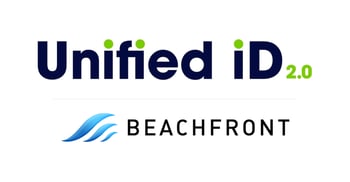As the Cookie Crumbles, LiveRamp IdentityLink Offers an Alternative
Published by Daniel Church on

For the better part of the last decade, those in adtech have often speculated on the inevitable death of the third-party cookie. From industry panels to gossip circles at Cannes, the fate of this ad identifier (and treasure of a beloved blue muppet) has been discussed at great length — and Google all but cemented the cookies’ fate when it shared it will phase them out by 2022.
This announcement came as a surprise to almost no one, but the swath of media coverage does underscore our industry’s complicated relationship with cookies — a relationship well-summarized by the IAB’s Randall Rothenberg in a recent AdExchanger piece.
“There is no arguing that cookies have been extraordinarily valuable to the entire consumer economy”, Rothenberg notes. “Studies show that the ad targeting they have powered has been worth more than $25 billion to the consumer economy...” He later adds, however, that “[cookies] are an imperfect technology that never should have been the backbone of personalized communications.”
Regardless of your perspective on the third-party cookie, one thing is clear: There is an opportunity for a new, privacy-first identifier to take center stage in adtech.
Along those lines, I am proud to share that earlier today, Beachfront and Beeswax became the first to adopt and enable LiveRamp IdentityLink™ — a people-based, privacy-first identifier — for Connected TV.
We know you may have a lot of questions following this announcement — especially with regard to IdentityLink and how you can activate it today. Below, we’ve tried to answer these in as much detail as possible, but please do reach out to us with any follow-ups.
1. What should we make of the decision to phase out cookies?
With a decision that required as much debate and scrutiny as this one, the results likely aren’t going to be definitively good or definitively bad — there are pros and cons for all parties involved.
For us at Beachfront, we see this change as an opportunity to help our publisher partners...
- Afford their viewers more choice and control over how their data is used.
- Establish more direct relationships with their audiences and better demonstrate the fair value exchange they offer to individuals
- Enable their advertising partners to engage their viewers with more valuable and relevant experiences.
In order to support these applications, we feel that alternative identity solutions — built specifically with privacy in mind — are needed. That’s why we are excited to enable IdentityLink-based advertising across our portfolio of premium video inventory.
2. What is LiveRamp IdentityLink?
LiveRamp IdentityLink is a people-based, privacy-first identifier that enables advertisers to resolve hundreds of different identifiers into a single, omnichannel profile. Today’s marketers use IdentityLink to stitch together disparate data sources, including online, offline, first-party CRM and third-party behavioral data.
Once a complete, omnichannel profile has been developed, marketers can activate against the profile to drive more customer-centric ad personalization. Further, with a more holistic view of the individual, marketers can better measure campaign performance across disparate touchpoints to optimize ROI over time.
3. That sounds kind of similar to a cookie. How is IDL different, especially in the context of privacy?While the general applications that cookies and IDL enable are similar, IDL is anchored in offline identity and built with privacy as a foundational component. It includes a person-based one-time opt-out to ensure that consumer preferences are respected and persisted across every addressable touchpoint.
Beyond privacy, LiveRamp also offers advantages (compared to cookies) that are related to data fidelity across the supply chain. As audience data moves from one party to the next (like from an advertiser to a DMP to a DSP), cookie syncs are required. With each successive sync, match rates generally decline and the result is a loss of scale. IdentityLink solves this by eliminating the need for cookie sync altogether as the IdentityLink is based not on a third-party cookie or device ID, but offline identity.
4. How can I leverage this partnership today?All a media buyer needs to do to start using this solution today is to set up a campaign in Beeswax’s DSP — across Beachfront’s portfolio of premium desktop, mobile and connected TV inventory — using IdentityLink as the ad identifier:
If you have additional questions or would like to learn more, reach out to us:





